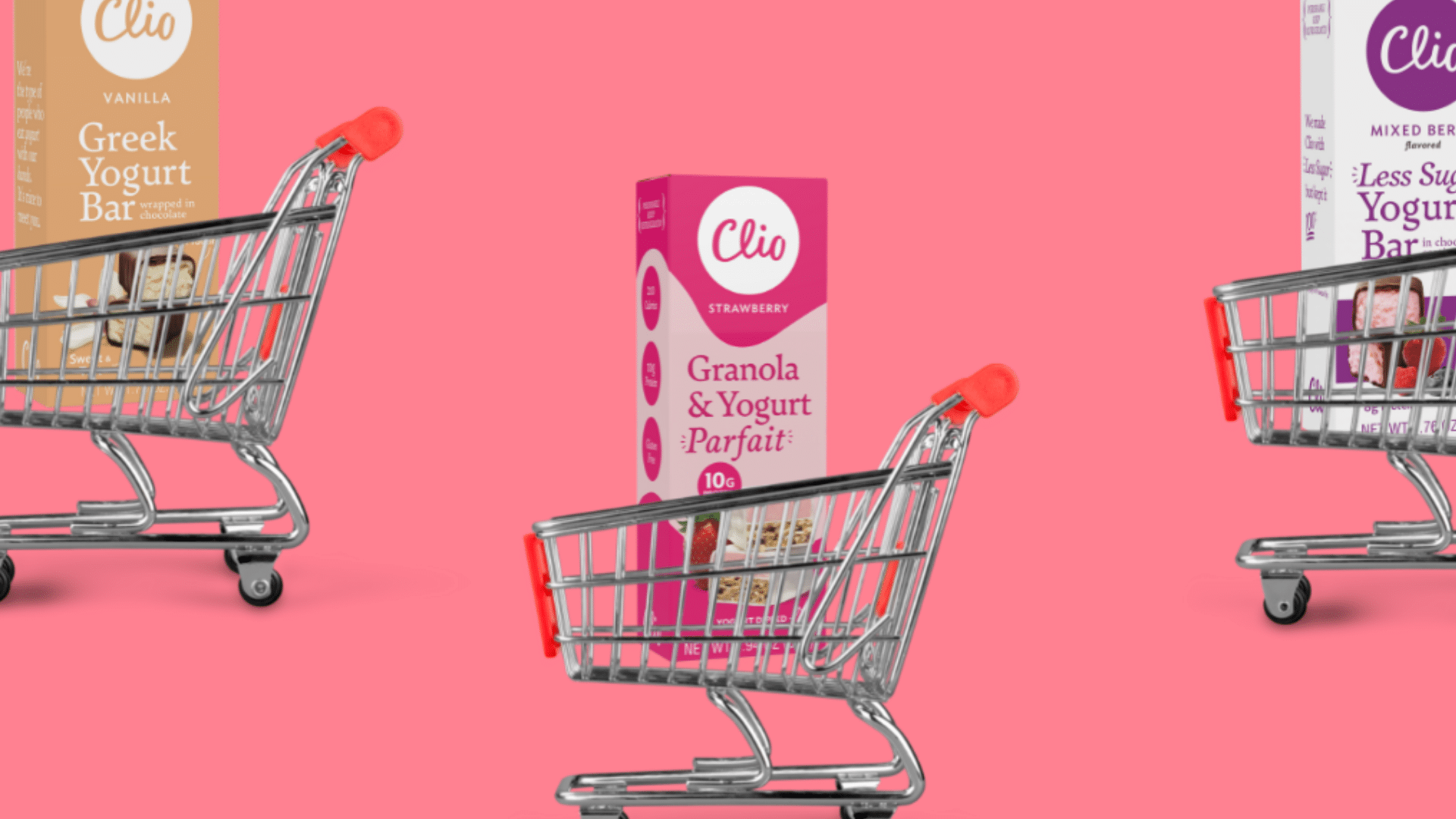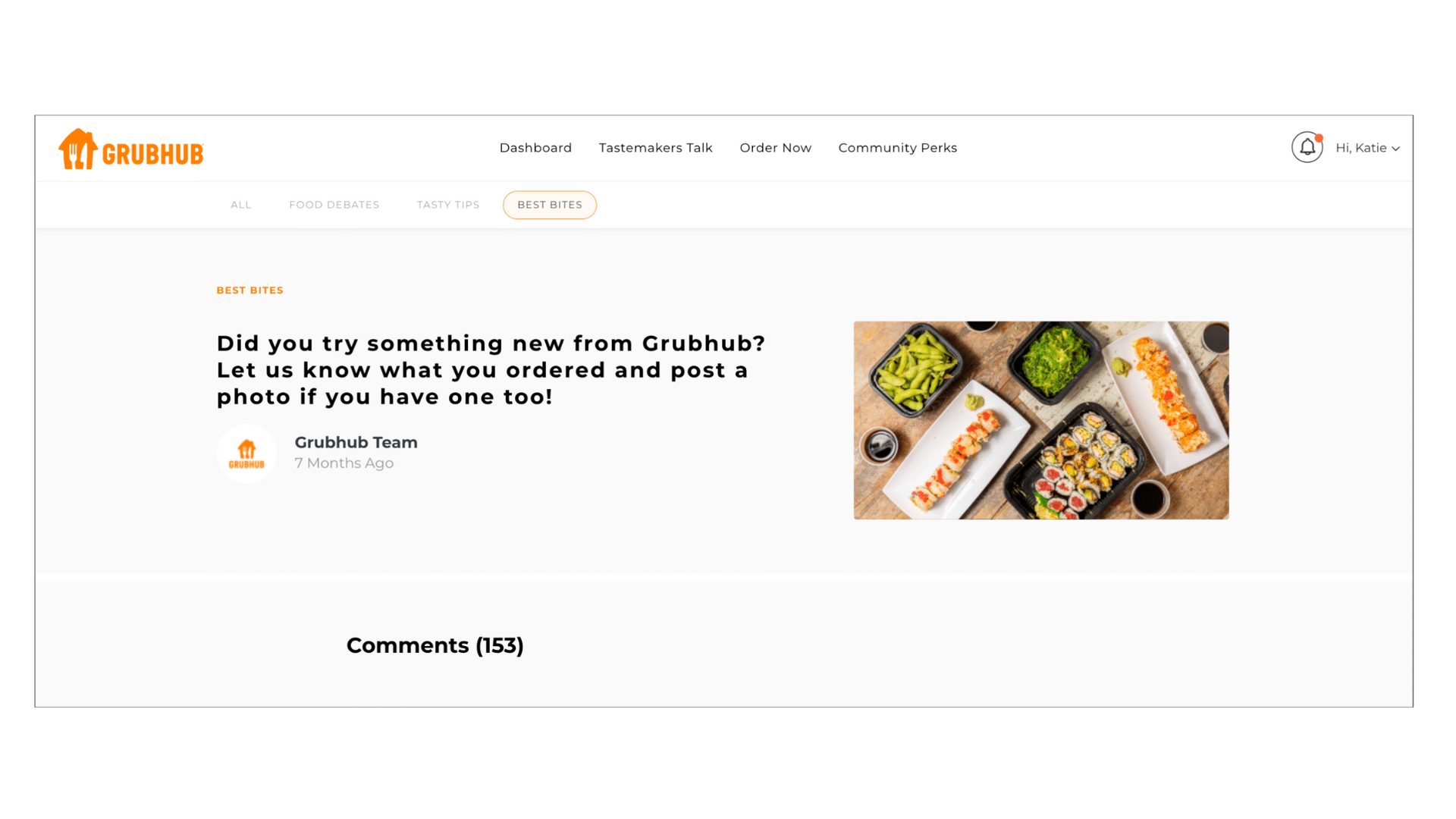In today’s competitive environment, community-building has become a key advantage for marketers to differentiate themselves and cultivate lasting consumer relationships.
In the article from Harvard Business Review, “When Community Becomes Your Competitive Advantage,” they advised marketers to leverage communities to unlock a superior business model, stating, “Communities are going to change the nature of how we interact with brands, products, and other people.”
Let’s discuss why community building is important and the top 10 strategies you can use to build a thriving community for your brand.
Why is Community Building Important?
Consumers today expect a different relationship with brands than in the past. They are not satisfied with standard email campaigns, flashy advertising, or routine loyalty programs. They seek deep interaction with a brand and connection with other like-minded people.
To meet the needs of consumers, brands must have a dedicated strategy for community building. What are some key benefits of building an online community?
Community Building Secures Long-Term Brand Loyalty
Consumer loyalty is changing. While traditional loyalty has relied heavily on transactional incentives to drive repeat purchases, modern loyalty is heavily influenced by the emotional connection a consumer feels towards your brand.
Online brand communities are one of the few purpose-built marketing channels to facilitate an emotional connection with consumers.
Research consistently shows that emotionally connected consumers are more than twice as valuable as even highly satisfied consumers. They buy more of your product, are less swayed by competitive promotions, and are more likely to recommend your brand to their social circles.
Peer-to-peer engagement has emerged as a core initiative to elevate brand sentiment and prevent brand equity loss.
Community Building Drives New Customer Acquisition
When you cultivate your audience into a passionate brand community, you will create a groundswell of brand advocacy across social media channels, retail websites, and offline circles.
This impacts brand awareness and reputation and drives new customer acquisition.
Research shows word of mouth is behind 20-50% of all new purchases. The power of positive word-of-mouth advertising is one of the fundamental truths of marketing, and community-building is a perfect channel to harness this influence.
Community Building Helps ‘Future-Proof’ Your Brand
In an evolving landscape, community building arms your team with valuable consumer insights to boost brand resilience through seismic industry shifts, from data privacy to the metaverse.
With an online brand community, you can get direct access to consumers to gather critical information that helps to map consumer journeys, gain validation for investments, and stay ahead of trends.
Put simply, community building helps you boost longevity, amplify word of mouth, prepare for the future, and understand your audience better.
What are some community building ideas that can work for your brand? Here are 10 proven methods you can try.
1. Cultivate an Owned Channel as a “Home” for Your Community
For many years, marketers flocked to social media sites like Facebook or Instagram to build their “community” but soon realized there were critical limitations regarding engagement and relationship-building.
Even if you amass a huge following, your audience ultimately belongs to the social media site. Your community will always be at the whim of a third party.
With industry changes such as third party cookies disappearing and increasing privacy regulations, there has been an enormous push for brands to develop their own zero party data channels.
When building your online community “home,” choosing the right online community platform software will be essential.
An online brand community should serve as a meaningful extension of your brand’s website to enhance your overall digital footprint.

Clio Snacks, a fast-growing, chocolate-covered yogurt brand, was no stranger to engaging its audience. Like most brands, they used Facebook and other social media pages as a way to engage but struggled with the ongoing limitations and data gatekeeping of these third party channels.
They launched the Clio Cravings Club via TINT’s community platform software and turned their community from Facebook-owned to brand-owned.
Through the community platform software, they could cultivate direct brand ambassador relationships and spread awareness to curious consumers through authentic, user-generated content.
As the Chief Marketing Officer from Clio Snacks says, “Our community members feel like they are a part of the development process…we can get so much strong insight while also driving long-term loyalty.”
In the first 100 days of their community launch, Clio Snacks saw a whopping +25% increase in brand loyalty, a +10% increase in emotional connection, and a +23% increase in household penetration.
2. Foster a Sense of Belonging and Create a Shared Community Identity
We’ve all experienced clicking with someone by saying “oh I love that brand!” Especially today, brands are a prominent backdrop for creating community connections.
When focusing on your community-building efforts, don’t just concentrate on the shared behavior of buying your brand. Focus on the genuine moments where your brand is part of the backdrop of real life, and use that as a launching point for connection.
Communities thrive when there is a shared language full of community monikers, memes, and symbols. There’s psychological evidence to back this up, too. Researchers found that nicknames, code phrases, inside jokes, and personal expressions boosted bonds.
Fast-growing frozen food brand Veggies Made Great cultivated a devoted following of people who declared themselves to be “VegHeads.” This passionate group of consumers is full of people who are health-conscious, busy parents looking to make good choices for their families.
They knew they had passionate fans, but creating their online community empowered them to mobilize advocates in one place and form deeper connections.
3. Think of Community-Building as Gardening, Not Carpentry
It makes sense why marketers want to make a big splash with the launch of an online community. However, it’s important to remember that community building should be akin to gardening rather than a prescribed step-by-step construction process. Gardens must be planted, tended to, and nurtured to grow and flourish.
Community building is all about quality over quantity. Unilever’s Seventh Generation brand knew that many of their consumers were new parents entering a phase in life that was affecting their bodies, social life, family life, and identity.
They aimed to create a lifestyle community called Generation Good to establish the Seventh Generation brand as progressive parents’ most trusted choice.
They carefully seeded the community with consumers from other channels and watched it grow steadily.
The Grassroots Marketing Manager later said, “What Generation Good does is take awareness to a new level with engagement. We thought it would be the most hardcore Seventh Generation users, but 60% of the community have never tried the brand; they’re just looking for other people to connect with about the lifestyle – and that’s perfect.”
4. Offer Exclusive and Personalized Experiences
Being a part of an online brand community should be fun and offer many different ways for everyone to participate. With TINT’s online community platform, consumers have access to dozens of interactive activities.
Brands can launch social sampling campaigns to seed product reviews, conduct surveys for product feedback, deliver exclusive promotional offers, host discussions, share invitations to in-person events, and more.
Successful community building offers experiences that meet consumer expectations. Today’s consumers expect communication to be relevant and tailored to them. McKinsey found that 71% of consumers expect personalization, and 76% get frustrated when they don’t find it.
People are constantly bombarded by companies asking for their personal information, which, as we know, has led to a flurry of changes from big tech players like Google and Apple.
An online brand community is a great place to build a positive relationship between the zero party data a consumer shares and the value they receive.

ARM & HAMMER’s timeless baking soda brand is widely known and has been a go-to cleaning solution for generations. When they started their Simple Solutions online community, they aimed to increase household penetration by collecting information about a consumer’s lifestyle and then offering relevant educational tips on the many uses of baking soda.
They developed targeted audience segments using TINT to deliver personalized experiences at scale. For parents, this could include science experiments and craft ideas. For people with an active outdoor lifestyle, it could be tips on using baking soda in skin remedies like bug bites.
5. Create a Place of Vibrant Conversation
We have all felt the sting of fragmented social circles at some point in the past three years. Online communities were a lifeline to fend off social isolation, especially during the pandemic.
The conversations among our digital tribes created long-lasting bonds, making online communities a daily part of consumers’ social lives.
If there’s any company that has mastered online discussion, it’s Reddit. The Reddit community is one of the world’s largest and arguably most active communities, with 430 million people using it every month.
Reddit is built around users submitting text, images, and videos, which others can comment on, interact with, and vote on. It’s divided into smaller communities called subreddits, a board dedicated to a particular topic.
Reddit’s “The Era of We” report touched upon how the authenticity of conversation makes online communities so appealing to consumers.
The report stated, “Fundamentally, online communities foster more genuine connections around shared interests, and they level out the playing field between people. Instead of trying to be everything to everyone, online communities allow users to interact within their subculture – whether that’s fashion and style fanatics, science enthusiasts, or cat lovers – and truly feel comfortable being themselves.”
In that report, Reddit researched the critical drivers for joining online communities. The top reasons they discovered were that people wanted to:
- Discover new things (77%)
- Connect with people who have a similar interest (66%)
- Find funny/entertaining content (62%)
- Keep up with the news/current events (60%)
- Ask a question to people knowledgeable about a topic (60%)
As you design your community-building strategy, focus on these motivations.
A considerable priority of your community-building strategy should be facilitating discussions. And while your brand can undoubtedly set the stage, make sure your consumers are the star of the show. You can organize topics of interest, pose questions, or offer reactions to commentary.
6. Showcase User-Generated Content (UGC)
One of the most powerful community-building tools at your disposal is leveraging the authentic content created by consumers.
People are attracted to opportunities for self-expression and love to feel special and appreciated.
As you can read in TINT’s report “The 5 Personas That Accelerate Brand Community Building,” we surveyed more than 14,000+ consumers to identify typical audience cohorts found in the average online community to understand what incentivizes them to participate.
One of the largest cohorts, coined “The Energetic Ones,” represented one-third of community members. The study found they are largely motivated by having social incentives like having their content featured.
You can highlight UGC within the community and make consumers feel like VIPs or community celebrities.
Additionally, you can broadcast UGC across your other marketing channels, enticing consumers to check out your community and engage with your brand further.
7. Offer Engaging and Fun Rewards for Participating
While a community-building strategy should include many activities to drive participation, it’s still important to encourage engagement through gamification.
Recognizing the contributions and achievements of your community members is one of the best ways to show appreciation and make members feel valued. There are a ton of different ways that you can do this, including:
- Points & badges
- Rewards store
- Public recognition
- Name ambassadors who are honored for their content
- Select members of the month
- Creating a VIP council to provide insights
Grubhub created their Tastemakers online community to connect with college students and general diners. One of the ways they entice participation is through tiered rewards available based on the number of points community members have earned.

Points can be accumulated through completing profile questions, filling out surveys, referring a friend, or participating in a discussion. Grubhub also activates its online brand communities for social sharing – they can earn points for posting photos and videos on Instagram and TikTok, hosting virtual dinner parties with friends, and much more.
Working with TINT, Grubhub said, “We’ve seen a huge increase in brand loyalty through this program. We saw an increase in members who consider our brand to be the preferred choice over competitors. Our advocates have ultimately become more brand loyal due to our connection with them through TINT.”
8. Co-Create and Crowdsource New Ideas
Co-creation is almost always a marketing win-win and a terrific strategy for community building.
When it comes to content, co-creation is empowering to consumers, prompting them to be inventive and imaginative. The brand wins because, hey, you didn’t have to pay for a pricey professional photograph.
Marketers can significantly reduce the time and resources it takes to create content and brainstorm ideas, while consumers can feel valued, heard, and invested in the brand.
With a portfolio of specialty health brands, DSE Healthcare Solutions started The Upside Community to engage with consumers, gather new ideas, and drive innovation.
When releasing a new iron supplement product, Fergon Iron Restore, they turned to the community as a full-funnel resource from conception to launch.
The community helped brainstorm the name of the product, offered feedback on ad creative, sampled the product, and seeded product ratings & reviews as part of the go-to-market strategy.
Chief Sales & Marketing Officer of DSE Healthcare Solutions says “Fergon Iron Restore was completely developed with the help of the community. They helped us name the product and then sample it and gave us reviews. That whole thing happened within the community.”
9. Welcome and Implement Feedback
A great way to strengthen your community-building strategy is to solicit ongoing feedback from community members. 77% of consumers say they favor brands that ask for and accept customer feedback.
This includes feedback about your product or service as well as input to improve the community experience. At the end of the day, a brand community exists to serve the group of people in it. Consumers appreciate this departure from the mentality that they are just numbers on a profit sheet, too. Active listening is a powerful tool. Successful community marketers don’t expect a constant love fest of dedicated fans.
Thriving communities give freedom to express their thoughts and opinions, offering criticism and solutions. This will bolster your community’s value to consumers.
Online communities can and should evolve with time. Feedback illuminates what is most important to your audience. Collecting feedback from your community members gives you answers to questions that can help you provide the ideal community experience:
- Why did your members join the community in the first place?
- What do they want from your community?
- What type of content and activities do they enjoy the most?
Continuously improving is an important part of building an online community that keeps members engaged and elevates their connection with your brand.
Microsoft’s Xbox brand has a long-established community of passionate gamers. When Microsoft released its Xbox Series X, the community jokingly started comparing its console to a fridge because of its shape.
The Microsoft team ran with this feedback and embraced the viral meme by releasing an actual mini fridge replica of their console – designed to store those all-important gaming refreshments and snacks. Xbox took community feedback and turned it into an “Xbox and Chill” reality.
10. Make Community the Secret Sauce of Your Brand
Community powered marketing is one of the best brand-building tools available. Too often, companies silo their online brand community and miss tremendous opportunities to achieve business-wide goals.
Marketers of the future know that building a brand is building the community.
This is especially prevalent for challenger and disruptor brands who seek to break into well-established markets. An advantage of these smaller brands is that they understand that marketers must replace “retention” with “relationship.”
These brands bake community directly into the brand’s DNA from the beginning, while prominent market leaders often have to play catchup in creating community values.
Fast-growing condiment brand Sir Kensington’s was in a crowded market of household names – Hellmann’s, Heinz, French’s, Hidden Valley, and Newman’s Own. The competition for shelf space is fierce.
Every decision Sir Kensington’s has made is to ensure their brand differs from everything else. They look to stand out and create excitement, buzz, and energy around their brand.
With the Taste Buds Community, the brand has created an engaging home where it can cultivate consumer passions. Sir Kensington’s has ignited a strong relationship with its community members that cannot be achieved through any other medium.



